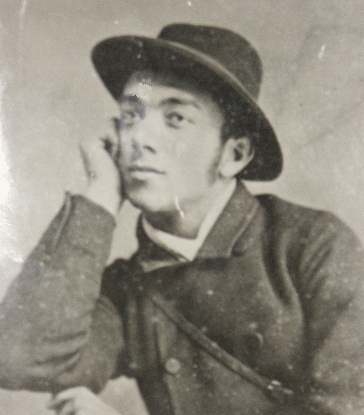
Humberside Geologist No. 13
(first published 2000)
The strange and wonderful Speeton Clay.
By Mike Horne FGS
|
If you go to Speeton (the southern end of Filey Bay) you may see some strange sights. You may see chalk pebbles with writing on them, stuck into the mucky grey cliffs. And occasionally you may see the creature responsible for these artefacts. It is one of a strange species of geologists known as 'The Friends of the Speeton Clay'. They are a bit like normal geologists (if that is not a contradiction in terms) but they have a habit of muttering strange numbers to themselves, or (if they get the chance) other people ! They also write these numbers on pebbles of chalk and stick them into the cliff and tend to abandon the familiar geological hammer in favour of ice picks, trowels or custom made tools. If you like you can join in their conversations: if they say "LB2B" or "C7G" you can say 'ooh yes' and nod enthusiastically. But do not get carried away and reply "E5C", because they would not have heard of this one before! The whole thing started when a chap called G W Lamplugh started collecting fossils over a hundred years ago. He was an amateur at the time and lived at Bridlington. He would camp on the top of the cliff and dash down at low tide to collect fossils. He went on to become a famous professional geologist and Fellow of the Royal Society and member of the Hull Geological Society.
So what did he discover? What is the addiction suffered by 'the Friends of the Speeton Clay'? These clays are the only U K exposure of the marine lower Cretaceous. Lamplugh did some very early stratigraphic logging and divided them into 6 units using belemnites as zonal fossils. He labeled them A to F from the top. These days we would have started from the base. The F beds were not really part of the Speeton Clay, and are Late Jurassic in age. The E Bed or Coprolite Bed is thin and very hard, and used to be mined for phosphates (sometimes you can see old pit props in the mud). The nodules in the B Beds used to be mined for making cement.
So part of the fascination is the impermanence of the exposure - you never know what to expect! The other fascination is the strange fossils. For some reason, Speeton has fossils which you would not expect. The Belemnites themselves are a bit unusual, big chunky Acroteuthis and the delicate Hibolites that all seem to be corroded at their back end (remember the pointy end of the belemnite fossil is at the tail end of the belemnite animal). Then there are the famous Speeton 'shrimps'. These little crustaceans are really very common in some beds and some have original colour banding preserved. Larger crustaceans have been found as well. The ammonites are lovely: beautiful tiny ones preserved in pyrite and large ones that are un-coiled! There are also sea urchins, brachiopods including Lingula, a variety of bivalves and worms of the encrusting and solitary coiled variety! Be warned, it is an addictive place. To get to know it properly, it is well worth getting to know some 'friends of the Speeton Clay' and asking them to show you round a couple of times. Then the wonders that will start to reveal themselves to you can be fitted into the stratigraphy and a whole new world opens up. |
